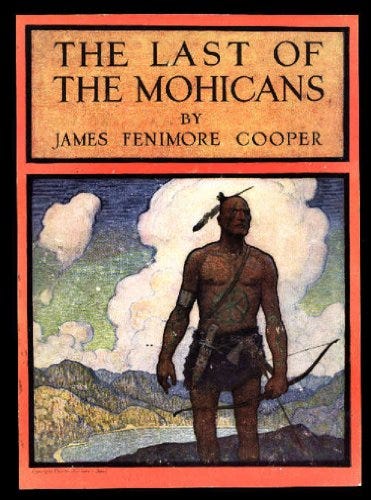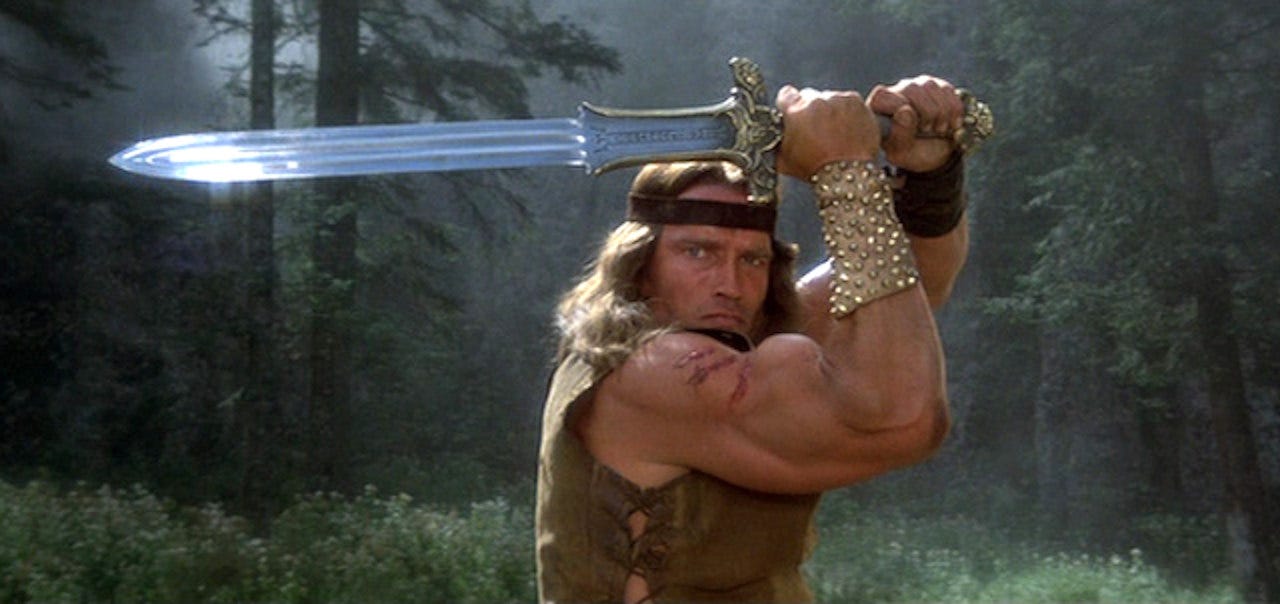A couple of weeks ago, I watched members of a crowd assault a woman holding a sign that read, "For the love of nature - For nuclear power” in German. The assailants shoved her around and ripped her sign apart. She was at a climate rally. The footage is astounding. You can watch it here.
The woman luckily made it out okay. Her name is Britta Augustin. She’s part of the group “Mothers for Nuclear Germany - Austria - Switzerland.” Mothers for Nuclear originally started in California by two mothers who work at the Diablo Canyon nuclear plant. The group wants to protect nuclear power plants to help fight climate change. Augustin has no ties to the nuclear industry. She’s just an advocate for nuclear--the safest, most reliable, lowest carbon emitting source of energy we have. It should be our go-to choice for fighting climate change.
But when I watched the footage I knew immediately what happened. It wasn’t crazed fossil fuel supporters assaulting Augustin because she loves clean firm energy. It was the dominant faction of environmentalists. They’ve long been the most outspoken opponents of nuclear energy. They’ve let emissions increase just to shut nuclear plants down. They lie in the media about nuclear dangers. They’ve succeeded in demonizing this vital technology and impoverishing the world because of it.
So, I’m launching a project to fight back. But before I do that, I need to tell you why I don’t care about appealing to the environmental movement anymore because it goes deeper than their anti-nuclearism.
The Leisure Class’s Millenarian Nostalgia
By 1926, Ford’s the River Rouge plant in Detroit had ninety-three buildings linked together by 120 miles of conveyors, thirty miles of internal roads, and ninety miles of rail including an elevated train that ran from factory to factory. Seventy-five thousand people worked there turning out 4,000 cars per day. When I learned this for the first time, I texted my mom. She grew up in the Motor City. Her dad, who I never got the privilege to meet, worked on the GM line. “Impressive,” she responded. “But the River Rouge ran behind my house. It was so polluted it never froze in the winter.” The story the environmental movement tells us is that problems like that inspired its creation. But that’s not even the half of it.
The environmental movement has its cultural origins in the Victorian era. Other critics like to argue that it harkens back a little further to Romanticism, but I disagree. While Romanticism certainly has a mournful quality to it, when we look at the work of Wordsworth or Coleridge it’s clear that mourning over the loss of innocence was part of cultivating the self and one’s values. As the scholar Peter Coveney put it: the Romantics valued innocence “for what it might become” whereas the Victorian pastoralists moved “toward the state of innocence itself” and fixed their gaze on an idealization of childhood--of the self and of the world.
It’s no surprise that many Victorian novels feature the tragic, sentimentalized death of a child who symbolizes all that is good in the world. Or they featured “noble savages” whose natural purity and communion with the earth stem from their existence in “the childhood of the world.” The tragic fate of such characters provides an occassion to lament over the simplicity of their pure, nature-bound hearts in contradistinction with our corrupted modern sensibilities. Nineteenth-century American author James Fenimore Cooper’s work (most famously The Last of the Mohicans) stands as a testament to the latter. As a critic once quipped, “Cooper never loves his Indians so much as when he is watching them disappear.”
Christopher Lasch pointed out that this fantasy world where nature stood for innocent idyll never reflected real rustic life. Imaginary visits to that dreamscape “could only be savored by people of refinement who did not seriously propose, after all, to exchange the advantages of breeding and worldly experience for a life close to nature, no matter how lyrically they sang nature’s praises.” In other words, this vision was a nostalgia born of a leisure class who would neither surrender their lifestyle nor flee their comforts to return to rustic life.
The iteration of this instinct for the nostalgic pastoral now goes by “environmentalism.” Like Victorian pastoralism, it’s part of the progressive view of history. “The more the modern age insisted on its own wisdom, experience, and maturity, the more appealing, allegedly simple, unsophisticated times appeared in retrospect,” wrote Lasch. “Progress implied nostalgia as its mirror image.” Like the pastoralists, contemporary environmentalism longs for an Edenic reunion with nature—a static world without the bothers of industrial life (and without its benefits). Environmentalism has, of course, changed a bit since its Victorian incarnation. It has taken on a demi-nihilistic intensity inherited from the social movements of the sixties and seventies.
It’s hard to remember just how demoralizing the sixties and seventies were. Culture shocks aside, America witnessed political and social movement leaders assassinated, the Cold War, a catastrophic blackout on the East Coast, the Iran hostage crisis, the OPEC crises, frequent domestic terrorism on behalf of the New Left’s enfants terribles The Weather Underground and their ilk, Vietnam, stagflation, and the fall of labor. The renewed social contract erected by FDR began to fray and America received a hard check on its (until then) indefatigable optimism. In response, some wondered if re-communion with nature, however poorly conceived, might serve us better and make the world more gentle to live in.
Many of the founders of the modern environmentalism movement cut their teeth in this milieu. Many are still around today. Some, like Bill McKibben, are their children. Their movement emerged in reaction to three dominant concerns: development, energy crises, and the threat of nuclear war. The birth of the environmental movement stemmed from the elite interest of vacation homeowners in the Hudson Valley area. They opposed ConEd’s construction of the Storm King pump storage station because they felt it might damage the views from their weekend mansions. The Sierra Club involved itself on their behalf and succeeded in depriving New York of the infrastructure that might have halted or at least mitigated the 1965 eastern connection blackout.
In response to the energy crisis, ideological disparates like Amory Lovins and Murray Bookchin came to the fore suggesting we need to focus on efficiency, “soft energy” production from renewables, and “healing” our scarred relationship with the natural world. For their part, Malthusians like Paul Erlich and Garrett Hardin figured the world would be better off with fewer people—which meant, of course, less energy, which was exactly the kind of “soft energy” Lovins and Bookchin favored.
Lastly, with the ever-present threat of nuclear war and the false equation of nuclear energy with nuclear weaponry came the third part of this trinity. Understandably horrified by Hiroshima, Nagasaki, and the cruelties endured in New Mexico and Bikini Atoll, the New Left took up arms against everything nuclear. The purest aesthetic expression of this vision arrived in the Jane Fonda (surprise, surprise) vehicle The China Syndrome. The conflation of civilian nuclear power with military nuclear power is one of their most enduring successes.
This point should be stressed: the environmental movement once considered nuclear energy its ally. As the movement became less about conservation (to the extent it ever was) and more about social control of development and elite status anxiety it shifted against nuclear. And the stakes felt high. If The Man could terminate humanity at the press of the button, what communities wouldn’t you sacrifice? If our need for energy could obliterate a whole city, which labor unions wouldn’t you oppose? After all, it’s always been a minoritarian movement, like the rest of the countercultural left.
The contemporary environmentalism of the twenty-first century lives as a kind of zombified version of that from the 60s and 70s. It shares the same misguided ideas about energy production, the same histrionics, and the same degrowth ideology. And, importantly, the same minoritarian, anti-democratic attitude. Many supporters of the movement aren’t even aware of these features as these ideas have become the movement’s inherited wisdom. This rings especially true for degrowth, which environmentalists nearer socialism will promise they condemn but who generally support policies like an all or largely renewables grid that would bring degrowth into being.
What’s new for environmentalism is its growing prominence thanks to its millenarian spin on climate change. Climate change is no doubt real, a coming apocalypse less so. And yet, raising the stakes to existential heights makes for compelling political theater and rallies the rabid. As Paul Erlich argued in the 70s, it would only take a vocal, committed minority to create the Malthusian change he wanted to see in the world.
Well, there’s no business like fear business.
This fear is in part what has allowed a teenage girl of elite pedigree, propped up by various NGOs most likely, to accuse world leaders of “robbing her of her childhood.” It’s what made the deranged, anti-democratic ideas of Andreas Malm, author of How to Blow Up a Pipeline: Learning How to Fight in a World on Fire, to find favorable coverage in Vox and the New Yorker. This ideology is what billionaire Peter Buffet neofeudalizes Kingston, NY with and what Amory Lovins helped the Germans undermine their energy system with.
And it’s what made it possible for someone like Gina McCarthy, formerly of the Natural Resources Defense Council, to rise to the inner circle of the White House. The NRDC worked to close the Indian Point nuclear plant earlier this year--emissions rose and the New York grid will now be more fragile going into winter. The NRDC is currently pushing to shut down Diablo Canyon in California, where I live, despite the state's struggles to keep its grid running, let alone “green.”
I’m aware this isn’t “all environmentalists.” I know and have worked with environmentalists who take a different view. And I’m aware that there are fine gradations of ideology within this camp—as a refugee from the left, I know these debates have achieved the scholastic sophistication of the unceasing “Whose communism? Which Marxism?” debate. But what most of my thoughtful environmentalist friends will admit is that they are a fringe sect of the larger movement.
And yet it seems that the language of the pronuclear crowd is cast in the image of the environmental movement. Always on the defensive, it wants environmentalists to respect nuclear for its low emissions and for the green left to love it for its high-paying union jobs. It hopes that people who want to destroy things like nuclear because they believe it will save the world will change their minds. Much of this reminds me of the tenor of the socialist left, which is mostly a debating society spot-welded to something larger than itself that has antithetical commitments of its own.
And that’s why I’m done pleading with actually existing environmentalism.
Why I’m Launching Nuclear Barbarians
I don’t want to fight on their turf. The environmental sleight of hand seems to be fear-mongering about “nature” while fragilizing and undermining society. As it was with Victorian-era pastoralism, so it is with contemporary environmentalism: a stalking horse for elite motion-sickness. They believe that extreme weather events will occur more frequently while believing we should make our society dependent on that weather for energy because they view nature as a primordial resource of purity that can cleanse them of their worries and responsibilities and so restore in them the innocence of their childhoods.
Bullshit.
As William Tucker wrote in the late seventies, “The correct word for the environmental vision is not clean or soft. It is genteel.” And the truth is we will see tomorrow, society will continue, and it's our duty to pass it down to posterity.
So, what if we focused on society first? What if we refused to play the moral blackmail game of “climate trauma” and “climate anxiety” but instead focused on ingenuity and civic virtue? What if the only way to save the environment is to focus on improving civic life? To do that we need to rethink energy, development, culture, and political possibility. We need to raise our thinking to meet the dignity of our task, not default to the level of our basest fears. Fear freezes; duty rallies.
And that’s where Nuclear Barbarians will start: as a weekly podcast and newsletter dedicated to bringing you interviews, analysis, and insight that can help us to reconsider our entire approach to the energy problems that face us today, with nuclear at its heart. More, of course, will come.
The first episode drops next week. Subscribe to this Substack to get it—it’s free. And if you like it, share it.
“Between the wish and the thing the world lies waiting.”
--Cormac McCarthy, All the Pretty Horses







I learned about your venture from the Titans of Nuclear podcast. I hope that you keep in touch with Bret Kuglemass. We need a platform to discuss his ideas.
Good luck! Do you have a link for the podcast?
(Pro-tip: I'd suggest at least creating the podcast with a short intro *before* announcing it, so that when you announce it, we can subscribe at that time. Otherwise, it becomes a victim of short attention span).